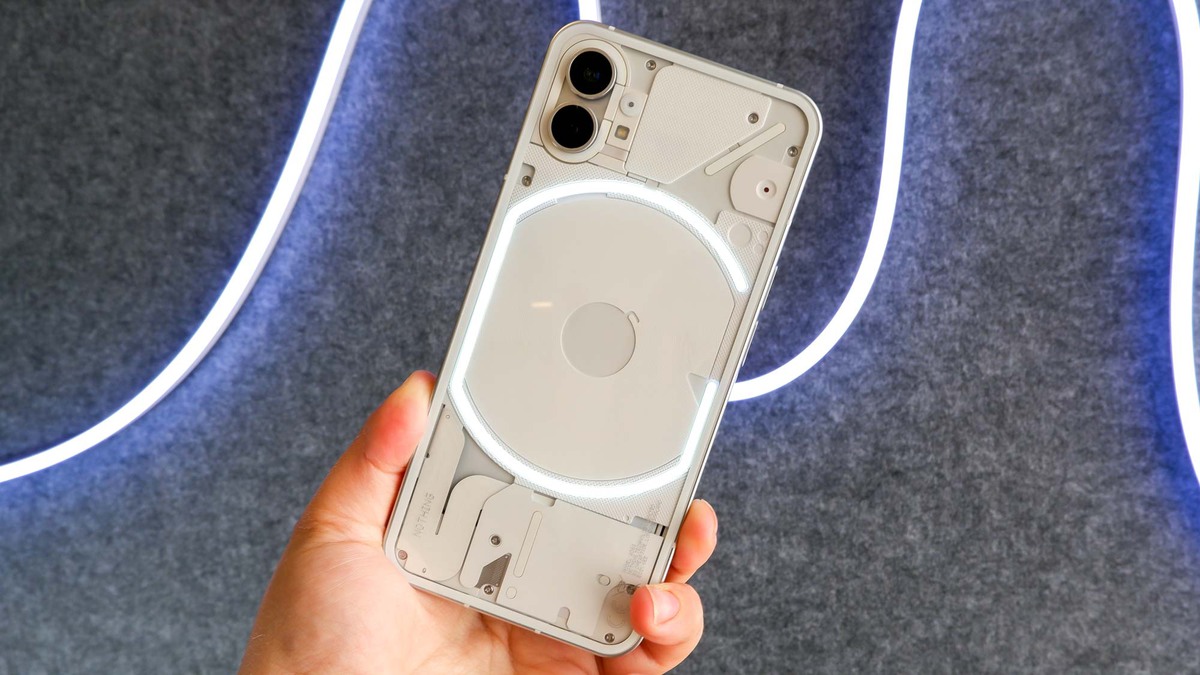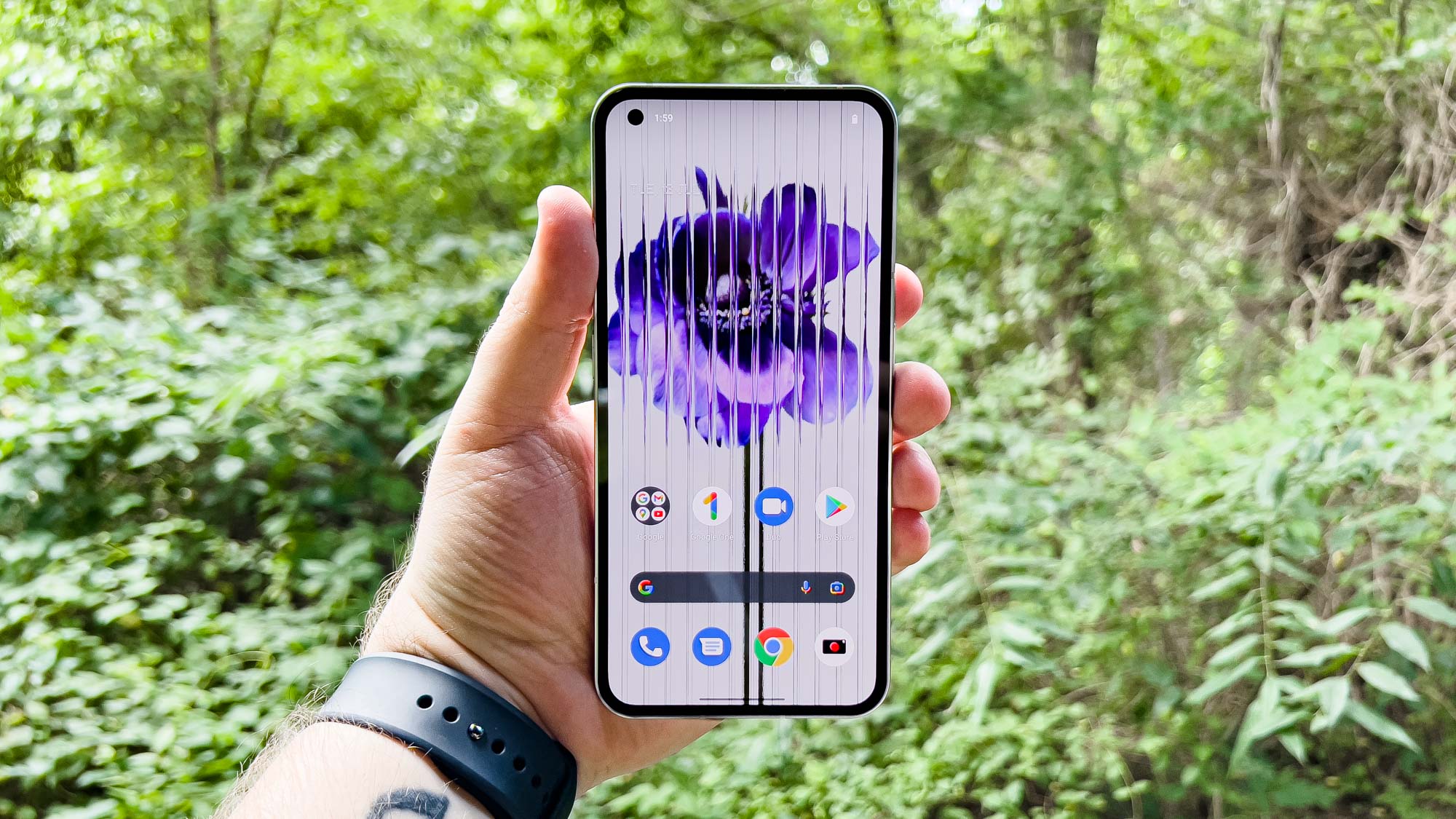Nothing looks to US for next phone launch — but there are huge obstacles
Big challenges await Nothing if it wants to sell phones in the U.S.

Nothing, the tech startup founded by Carl Pei of OnePlus fame, dreams of taking on the iPhone. We'd be happy if the phone maker just brought its handset to the U.S.
If you're not familiar with Nothing, it's the oddly named follow-up act for Pei, who co-founded Chinese phone maker OnePlus. Nothing's first handset, the Nothing Phone (1), debuted earlier this year, but not in the U.S. — instead, the phone shipped in Asia, the Middle East and Europe.
But that could be changing. Pei, in an interview with CNBC, says the company is in "early conversations" with U.S. carriers about offering Nothing's phones. While Pei isn't naming names or providing a time frame for any announcement, a deal between a wireless carrier and Nothing would be a big step toward U.S. availability for future devices.
Even if that does come to pass, Nothing would still have its work cut out for it to make Apple sweat. But anything that expands the pool of best Android phones would be a welcome move for U.S. shoppers.
Nothing Phone (1): Why it didn't reach the U.S.
The reason why we didn’t launch in the U.S. is because you need a lot of additional technical support, to support all the carriers and their unique customizations that they need to make on top of Android.
— Carl Pei
To hear Pei tell it, there's not much mystery as to why his new company skipped the U.S. with the Nothing Phone (1) launch earlier this year. "The reason why we didn’t launch in the U.S. is because you need a lot of additional technical support, to support all the carriers and their unique customizations that they need to make on top of Android," he told CNBC. "We felt that we weren’t ready before."
Even without the U.S. market, the Nothing Phone (1) sold in decent numbers for a startup's first-time device. Pei told CNBC that the Nothing shipped 500,000 phones. Throw in the 600,000 Ear (1) and Ear (stick) earbuds the company sold — both of which are available round these parts — and that's 1 million Nothing products out in the wild.
Those numbers would theoretically swell if a future Nothing phone were to debut in the U.S. — assuming that the company's preliminary talks with carriers result in a deal. While you're not hurting for choice when it comes to grabbing one of the best unlocked phones, the fact of the matter is that most shoppers get their mobile devices through a wireless carrier. Phone makers that don't have a U.S. carrier offering their handsets can struggle to make a splash.
You only have to look at Pei's former company, OnePlus, to see the importance that a carrier plays for U.S. phone sales. Early OnePlus phones certainly helped the company establish its "flagship killer" reputation, but it wasn't until the OnePlus 6T became available through T-Mobile in 2018 that OnePlus devices became viable alternatives to more established handsets.
The challenge facing Nothing
Even then, phones from OnePlus and other manufacturers have to contend with two long shadows over the U.S. smartphone market. Apple and Samsung dominate phone sales, accounting for 78% of the devices sold in the U.S. during the second quarter of this year, based on figures posted by Counterpoint Research. Should a Nothing phone reach the U.S., it would be competing for that remaining 20% market share with the likes of Google, OnePlus and Motorola — not threatening Apple's perch.
If Nothing does bring a future phone to the U.S., it will have to be a bit more polished than the Nothing (1) to make a splash. While there was plenty to like about the midrange phone — which, at £399, competes with the likes of the iPhone SE 2022 and Pixel 6a — we found it lacking in a few areas.

First, the positives: The Nothing Phone (1) was one of the few phones debuting in the past year to offer its own distinctive look. The phone is characterized by swooping glyphs that adorn its backside. These aren't there just for show, though — the glyphs use LED lighting to alert you to incoming calls and notifications. You can even tweak the different light patterns to identify specific callers. It's a unique approach that helps the Nothing Phone (1) get its foot in the door.
Alas, the innovations stop there. While Nothing's phone posted better battery life than a lot of midrange models have in recent testing, we found its overall performance underwhelming and its cameras failed to keep pace with other top camera phones. Considering that we tested the Nothing Phone (1) against the Pixel 5a, we assume the photo gap has only grown given the improvements Google subsequently made to its Pixel 6a successor.
Nothing's U.S. outlook
So that gives Nothing two areas to work on for the Nothing Phone (2), especially if it wants to bring that device to the U.S. market. The trouble is, it doesn't sound like that's happening any time soon, whether a carrier partner emerges or not.
Phone (2) isn't launching anytime soon. We're focused on doing a few things well, and won't churn out dozens of products a year like many others.Phone (1) is our main focus. We're cooking something really great in terms of software, Android 13 and beyond.December 5, 2022
Jn a subsequent tweet posted after the CNBC interview, Pei suggested that a Phone (1) successor is not imminent. "Phone (2) isn't launching anytime soon," Pei tweeted. "We're focused on doing a few things well, and won't churn out dozens of products a year like many others."
If that means more time to work on improving the next phone while also getting a U.S. carrier on board, all the better for both Nothing and its potential customers in this country. Certainly, Nothing has plenty of work ahead of it.
Sign up to get the BEST of Tom's Guide direct to your inbox.
Get instant access to breaking news, the hottest reviews, great deals and helpful tips.
Philip Michaels is a Managing Editor at Tom's Guide. He's been covering personal technology since 1999 and was in the building when Steve Jobs showed off the iPhone for the first time. He's been evaluating smartphones since that first iPhone debuted in 2007, and he's been following phone carriers and smartphone plans since 2015. He has strong opinions about Apple, the Oakland Athletics, old movies and proper butchery techniques. Follow him at @PhilipMichaels.

